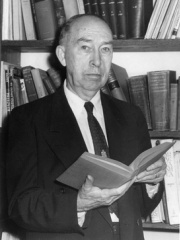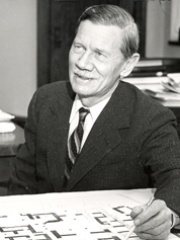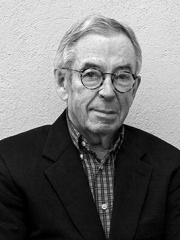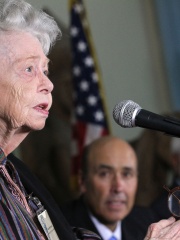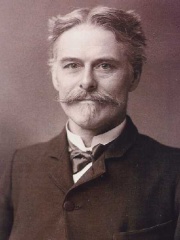
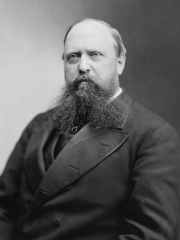
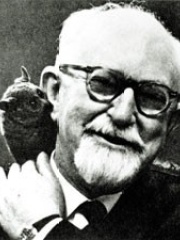
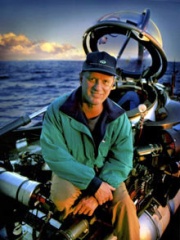
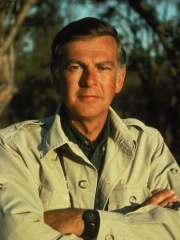
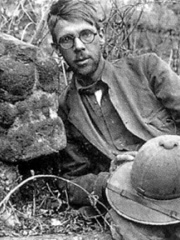
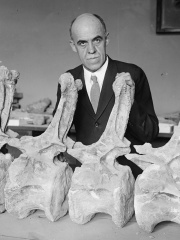
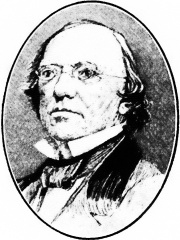
The Most Famous
ARCHAEOLOGISTS from United States
This page contains a list of the greatest American Archaeologists. The pantheon dataset contains 151 Archaeologists, 19 of which were born in United States. This makes United States the birth place of the 3rd most number of Archaeologists behind United Kingdom, and Germany.
Top 10
The following people are considered by Pantheon to be the top 10 most legendary American Archaeologists of all time. This list of famous American Archaeologists is sorted by HPI (Historical Popularity Index), a metric that aggregates information on a biography's online popularity. Visit the rankings page to view the entire list of American Archaeologists.

1. Edward Drinker Cope (1840 - 1897)
With an HPI of 74.30, Edward Drinker Cope is the most famous American Archaeologist. His biography has been translated into 41 different languages on wikipedia.
Edward Drinker Cope (July 28, 1840 – April 12, 1897) was an American zoologist, paleontologist, comparative anatomist, herpetologist, and ichthyologist. Born to a wealthy Quaker family, he distinguished himself as a child prodigy interested in science, publishing his first scientific paper at the age of 19. Though his father tried to raise Cope as a gentleman farmer, he eventually acquiesced to his son's scientific aspirations. Cope had little formal scientific training, and he eschewed a teaching position for field work. He made regular trips to the American West, prospecting in the 1870s and 1880s, often as a member of U.S. Geological Survey teams. A personal feud between Cope and paleontologist Othniel Charles Marsh led to a period of intense fossil-finding competition now known as the Bone Wars. Cope's financial fortunes soured after failed mining ventures in the 1880s, forcing him to sell off much of his fossil collection. He experienced a resurgence in his career toward the end of his life before dying on April 12, 1897. Though Cope's scientific pursuits nearly bankrupted him, his contributions helped to define the field of American paleontology. He was a prodigious writer with 1,400 papers published over his lifetime, although his rivals debated the accuracy of his rapidly published works. He discovered, described, and named more than 1,000 vertebrate species, including hundreds of fishes and dozens of dinosaurs.

2. Othniel Charles Marsh (1831 - 1899)
With an HPI of 64.35, Othniel Charles Marsh is the 2nd most famous American Archaeologist. His biography has been translated into 37 different languages.
Othniel Charles Marsh (October 29, 1831 – March 18, 1899) was an American professor of paleontology. A prolific fossil collector, Marsh was one of the preeminent paleontologists of the nineteenth century. Among his legacies are the discovery or description of dozens of new species—including Stegosaurus and Triceratops—and theories on the origins of birds. He spent his academic career at Yale College and was president of the National Academy of Sciences. Born into a modest family, Marsh was able to afford higher education thanks to the generosity of his wealthy uncle George Peabody. After graduating from Yale College in 1860 he traveled the world, studying anatomy, mineralogy and geology. He obtained a teaching position at Yale upon his return. From the 1870s to 1890s, he competed with rival paleontologist Edward Drinker Cope in a period of frenzied Western American expeditions known as the Bone Wars. Marsh's greatest legacy is the collection of Mesozoic reptiles, Cretaceous birds, and Mesozoic and Tertiary mammals that now constitute the backbone of the collections of Yale's Peabody Museum of Natural History and the Smithsonian Institution. Marsh has been called "both a superb paleontologist and the greatest proponent of Darwinism in nineteenth-century America."

3. George Gaylord Simpson (1902 - 1984)
With an HPI of 64.16, George Gaylord Simpson is the 3rd most famous American Archaeologist. His biography has been translated into 34 different languages.
George Gaylord Simpson (June 16, 1902 – October 6, 1984) was an American paleontologist. Simpson was perhaps the most influential paleontologist of the twentieth century, and a major participant in the modern synthesis, contributing Tempo and Mode in Evolution (1944), The Meaning of Evolution (1949) and The Major Features of Evolution (1953). He was an expert on extinct mammals and their intercontinental migrations. Simpson was extraordinarily knowledgeable about Mesozoic fossil mammals and fossil mammals of North and South America. He anticipated such concepts as punctuated equilibrium (in Tempo and Mode) and dispelled the myth that the evolution of the horse was a linear process culminating in the modern Equus caballus. He coined the word hypodigm in 1940, and published extensively on the taxonomy of fossil and extant mammals. Simpson was influentially, and incorrectly, opposed to Alfred Wegener's theory of continental drift, but accepted the theory of plate tectonics (and continental drift) when the evidence became conclusive. He was Professor of Zoology at Columbia University, and Curator of the Department of Geology and Paleontology at the American Museum of Natural History from 1945 to 1959. He was Curator of the Museum of Comparative Zoology at Harvard University from 1959 to 1970, and a Professor of Geosciences at the University of Arizona from 1968 until his retirement in 1982.

4. Robert Ballard (b. 1942)
With an HPI of 63.90, Robert Ballard is the 4th most famous American Archaeologist. His biography has been translated into 33 different languages.
Robert Duane Ballard (born June 30, 1942) is an American retired Navy officer and a professor of oceanography at the University of Rhode Island who is noted for his work in underwater archaeology (maritime archaeology and archaeology of shipwrecks) and marine geology. He is best known by the general public for the discoveries of the wrecks of the RMS Titanic in 1985, the battleship Bismarck in 1989, and the aircraft carrier USS Yorktown in 1998. He discovered the wreck of John F. Kennedy's PT-109 in 2002 and visited Biuku Gasa and Eroni Kumana, who saved its crew. Ballard discovered hydrothermal vents, undersea volcanic features that emit plumes of hot, nutrient-laden water which support the only ecosystems on Earth entirely independent of the Sun. He was quoted as saying that "finding hydrothermal vents beats the hell out of finding the Titanic". His mother later agreed, commenting "It's too bad you found that rusty old boat... they're only going to remember you for finding [it]". Ballard also established the JASON Project, and leads ocean exploration on the research vessel E/V Nautilus.
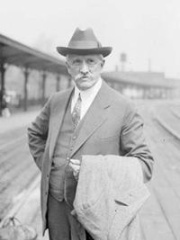
5. James Henry Breasted (1865 - 1935)
With an HPI of 61.42, James Henry Breasted is the 5th most famous American Archaeologist. His biography has been translated into 32 different languages.
James Henry Breasted (; August 27, 1865 – December 2, 1935) was an American archaeologist, Egyptologist, and historian. After completing his PhD at the University of Berlin in 1894 – the first American to obtain a doctorate in Egyptology – he joined the faculty of the University of Chicago. In 1901, he became director of the Haskell Oriental Museum at the university, where he continued to concentrate on Egypt. In 1905, Breasted was promoted to full professor and held the first chair in Egyptology and Oriental History in the United States. Breasted was a committed field researcher in Egypt and the Levant and had a productive interest in recording and interpreting ancient writings, especially from sources and structures that he feared may be lost forever. In 1919, he founded the Oriental Institute (later known as, the Institute for the Study of Ancient Cultures) at the University of Chicago, a center for interdisciplinary study of ancient civilizations. That same year, he was elected to the American Philosophical Society.

6. Donald Johanson (b. 1943)
With an HPI of 59.37, Donald Johanson is the 6th most famous American Archaeologist. His biography has been translated into 24 different languages.
Donald Carl Johanson (born June 28, 1943) is an American paleoanthropologist. He is best known for discovering the fossil of a female hominin australopithecine known as "Lucy" in the Afar Triangle region of Hadar, Ethiopia.

7. Sylvanus Morley (1883 - 1948)
With an HPI of 58.55, Sylvanus Morley is the 7th most famous American Archaeologist. Her biography has been translated into 20 different languages.
Sylvanus Griswold Morley (June 7, 1883 – September 2, 1948) was an American archaeologist and epigrapher who studied the pre-Columbian Maya civilization in the early 20th century. Morley led extensive excavations of the Maya site of Chichen Itza on behalf of the Carnegie Institution and published several large compilations and treatises on Maya hieroglyphic writing. He also wrote popular accounts on the Maya for a general audience. To his contemporaries, "Vay" Morley was one of the leading Mesoamerican archaeologists of his day. Although more recent developments in the field have resulted in a re-evaluation of his theories and works, his publications, particularly on calendric inscriptions, are still cited. In his role as director of various projects sponsored by the Carnegie Institution, he oversaw and encouraged many others who later established notable careers in their own right. His commitment and enthusiasm for Maya studies helped inspire the necessary sponsorship for projects that would ultimately reveal much about ancient Maya civilization. Morley also conducted espionage in Mexico on behalf of the United States during World War I, but the scope of those activities only came to light well after his death. His archaeological field work in Mexico and Central America provided suitable cover for his work with the United States' Office of Naval Intelligence investigating German activities and anti-American activity.

8. Charles W. Gilmore (1874 - 1945)
With an HPI of 58.03, Charles W. Gilmore is the 8th most famous American Archaeologist. His biography has been translated into 20 different languages.
Charles Whitney Gilmore (March 11, 1874 – September 27, 1945) was an American paleontologist who gained renown in the early 20th century for his work on vertebrate fossils during his career at the United States National Museum (now the National Museum of Natural History). Gilmore named many dinosaurs in North America and Mongolia, including the Cretaceous sauropod Alamosaurus, Alectrosaurus, Archaeornithomimus, Bactrosaurus, Brachyceratops, Chirostenotes, Mongolosaurus, Parrosaurus, Pinacosaurus, Styracosaurus ovatus (now Rubeosaurus) and Thescelosaurus.

9. Edward Robinson (1794 - 1863)
With an HPI of 57.75, Edward Robinson is the 9th most famous American Archaeologist. His biography has been translated into 24 different languages.
Edward Robinson (April 10, 1794 – January 27, 1863) was an American biblical scholar known for his magnum opus, Biblical Researches in Palestine, the first major work in biblical geography and biblical archaeology, which earned him the epithets "Father of Biblical Geography" and "Founder of Modern Palestinology." He studied in the United States and Germany, centers of biblical scholarship and exploration of the Bible as history. He translated scriptural works from classical languages as well as German translations. His Greek and English Lexicon of the New Testament (1836; last revision, 1850) became a standard authority in the United States and was reprinted several times in Great Britain.
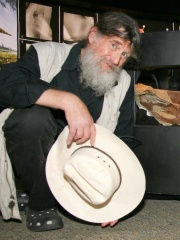
10. Robert T. Bakker (b. 1945)
With an HPI of 56.41, Robert T. Bakker is the 10th most famous American Archaeologist. His biography has been translated into 26 different languages.
Robert Thomas Bakker (born March 24, 1945) is an American paleontologist who helped reshape modern theories about dinosaurs, particularly by adding support to the theory that some dinosaurs were endothermic (warm-blooded). Along with his mentor John Ostrom, Bakker was responsible for initiating the ongoing "dinosaur renaissance" in paleontological studies, beginning with Bakker's article "Dinosaur Renaissance" in the April 1975 issue of Scientific American. His specialty is the ecological context and behavior of dinosaurs. Bakker has been a major proponent of the theory that dinosaurs were warm-blooded, smart, fast, and adaptable. He published his first paper on dinosaur endothermy in 1968. His seminal work, The Dinosaur Heresies, was published in 1986. He revealed the first evidence of parental care at nesting sites for Allosaurus. He also observed evidence in support of Eldredge and Gould's theory of punctuated equilibrium in dinosaur populations. Bakker currently serves as the Curator of Paleontology for the Houston Museum of Natural Science.
People
Pantheon has 19 people classified as American archaeologists born between 1794 and 1965. Of these 19, 6 (31.58%) of them are still alive today. The most famous living American archaeologists include Robert Ballard, Donald Johanson, and Robert T. Bakker. The most famous deceased American archaeologists include Edward Drinker Cope, Othniel Charles Marsh, and George Gaylord Simpson. As of April 2024, 1 new American archaeologists have been added to Pantheon including Thomas R. Holtz Jr..
Living American Archaeologists
Go to all RankingsRobert Ballard
1942 - Present
HPI: 63.90
Donald Johanson
1943 - Present
HPI: 59.37
Robert T. Bakker
1945 - Present
HPI: 56.41
J. P. Mallory
1945 - Present
HPI: 51.75
William G. Dever
1933 - Present
HPI: 48.62
Thomas R. Holtz Jr.
1965 - Present
HPI: 39.37
Deceased American Archaeologists
Go to all RankingsEdward Drinker Cope
1840 - 1897
HPI: 74.30
Othniel Charles Marsh
1831 - 1899
HPI: 64.35
George Gaylord Simpson
1902 - 1984
HPI: 64.16
James Henry Breasted
1865 - 1935
HPI: 61.42
Sylvanus Morley
1883 - 1948
HPI: 58.55
Charles W. Gilmore
1874 - 1945
HPI: 58.03
Edward Robinson
1794 - 1863
HPI: 57.75
Stith Thompson
1885 - 1976
HPI: 55.65
Lewis Binford
1932 - 2011
HPI: 55.17
Carl Blegen
1887 - 1971
HPI: 55.06
Michael D. Coe
1929 - 2019
HPI: 54.67
Nancy Dupree
1927 - 2017
HPI: 54.03
Newly Added American Archaeologists (2025)
Go to all RankingsOverlapping Lives
Which Archaeologists were alive at the same time? This visualization shows the lifespans of the 13 most globally memorable Archaeologists since 1700.




